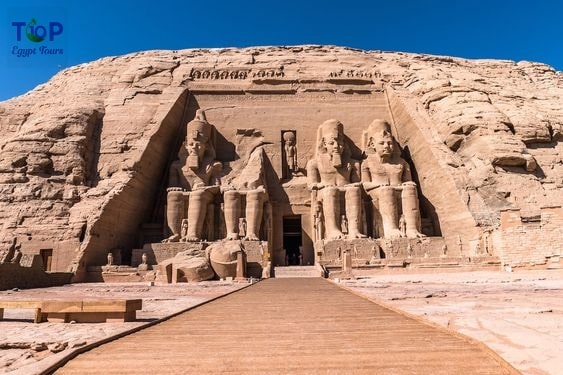Nestled on the eastern bank of the majestic Nile River in Luxor, the Temple of Karnak stands as an unparalleled testament to the grandeur and sophistication of ancient Egyptian architecture. Dedicated primarily to the worship of the powerful god Amun, the temple complex evolved over a span of more than two millennia, with successive pharaohs leaving their mark on its sprawling grounds.
The Temple of Karnak is one of the most awe-inspiring and significant historical sites in Egypt. Located on the east bank of the Nile in Luxor, this vast complex of temples and chapels spans over 100 acres and dates back to the Middle Kingdom (2055-1650 BCE). It’s a must-visit destination for anyone traveling to Egypt, as it offers a unique insight into the country’s rich history and culture.
Architectural Marvels:
The Great Hypostyle Hall:
The crown jewel of Karnak, the Great Hypostyle Hall, is a colossal forest of 134 massive columns arranged in 16 rows. Each column, towering at 23 meters, is intricately adorned with hieroglyphs and intricate carvings. The sheer scale of this hall is awe-inspiring and served as a sacred space for religious ceremonies.
Obelisks and Statues:
Scattered throughout Karnak are monumental obelisks, tapering stone structures that once graced the entrance of the temple. These towering monoliths were often erected in pairs and adorned with inscriptions and carvings detailing the accomplishments of the pharaohs. The statues, depicting pharaohs and deities, flank pathways and chambers, instilling a sense of divine presence.
Sacred Lakes and Courtyards:
The temple complex features expansive courtyards and sacred lakes that served both practical and symbolic purposes. The Sacred Lake, known for its pristine waters, was used for ritualistic ablutions. Courtyards, surrounded by colonnades and statues, were integral to religious processions and gatherings.
Key Points of Interest:
The Avenue of Sphinxes:
The entrance to Karnak is marked by the imposing Avenue of Sphinxes, a monumental pathway lined with Sphinx statues. Originally connecting Karnak to the Luxor Temple, this avenue was symbolic of the sacred journey the pharaohs would undertake during religious festivals.
Precincts and Temples:
The temple is divided into distinct precincts, each dedicated to different gods and goddesses. The Precinct of Amun-Re, the central focus, houses the main sanctuary and the imposing pylon entrance. The Precinct of Mut is dedicated to the mother goddess, and the Precinct of Montu pays homage to the god of war.
Sound and Light Show:
Visitors can experience the magic of Karnak after sunset through the Sound and Light Show. As the temple is illuminated, narrations and music bring to life the history and mythology of ancient Egypt, creating a mesmerizing atmosphere.
Practical Considerations:
1.Guided Tours:
To fully appreciate the historical and cultural significance of Karnak, consider engaging a knowledgeable guide who can provide insights into the symbolism and rituals associated with each structure.
2.Sun Protection:
Given the sun-drenched location, it is advisable to wear sunscreen, a hat, and comfortable clothing to protect against the intense Egyptian sun.
3.Photography and Respect:
While photography is generally allowed, visitors should be respectful of sacred areas and adhere to any restrictions in place. Some chambers and sanctuaries may have specific guidelines regarding photography.
The Temple of Karnak is not merely a collection of structures; it is a living narrative of Egypt’s cultural and religious evolution. As you explore its vast expanses, you embark on a journey through time, unraveling the mysteries of an ancient civilization that revered the divine and celebrated the splendors of life. Top Ten Egypt Tours welcomes you to immerse yourself in the awe-inspiring legacy of Karnak, where every stone tells a story, and every carving whispers the secrets of a bygone era.



Comment (0)